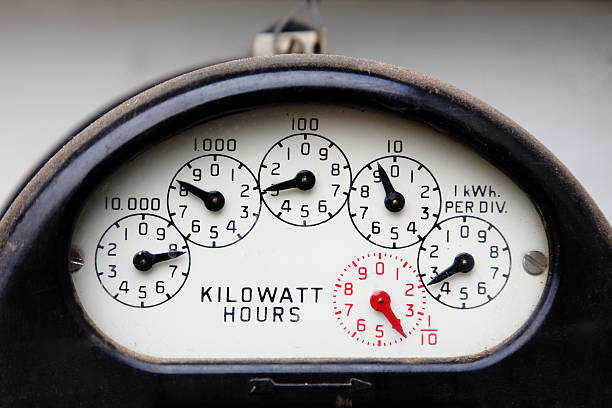If your business uses a significant amount of electricity, you may have heard the term half-hourly meter (HH meter). But what exactly is it? And do you really need one?
In this guide, Scalex Technology breaks down what a half-hourly meter is, who it applies to, and the advantages of having one for your business energy management.
⚡ What Is a Half-Hourly Meter?
A half-hourly meter (or HH meter) is a type of commercial electricity meter that automatically records and sends your electricity usage to your supplier every 30 minutes.
This provides accurate, real-time energy consumption data, allowing suppliers to bill you based on your actual usage—rather than estimates.
🔍 How Does It Work?
- The meter is connected to a Data Collector (DC) and a Meter Operator (MOP).
- Every 30 minutes, your usage data is collected and transmitted to your energy supplier.
- This data is used for precise billing, energy audits, and usage forecasting.

🏢 Do You Need a Half-Hourly Meter?
You’re required by law to have a half-hourly meter if your business has a maximum demand of 100 kW or more in any half-hour period.
📌 Look for profile class ’00’ on your MPAN (Meter Point Administration Number) – this indicates you already have a half-hourly supply.
✔️ Businesses That Typically Need HH Meters:
- Manufacturing plants
- Large retail stores or supermarkets
- Warehouses or logistics centres
- Office buildings with high usage
- Data centres or tech companies
Even if you’re not legally required, if your business is using above 70,000 kWh per year, a HH meter can offer significant benefits.
✅ Benefits of a Half-Hourly Meter
| Benefit | Description |
|---|---|
| Accurate Billing | Avoid estimated bills and only pay for what you use |
| Better Energy Management | Monitor peak usage times and reduce demand charges |
| Compliance | Meet regulatory requirements (mandatory for some businesses) |
| Improved Forecasting | Helps with budgeting and energy procurement planning |
| Supports Green Goals | Enables better energy-efficiency tracking and carbon reporting |
💼 What Do You Need to Set One Up?
To install a half-hourly meter, you’ll need:
- A Meter Operator Agreement (MOP) – a contract with an accredited engineer to install and maintain the meter.
- A Data Collector/Data Aggregator Agreement (DC/DA) – for collecting and sending your meter data.
- An energy supplier familiar with HH billing (like those partnered with Scalex Technology).
🔧 Don’t worry – Scalex handles all of this for you, ensuring compliance and zero downtime.
🧾 Costs to Consider
- Installation cost (can range from £250–£500)
- Ongoing MOP/DC/DA service fees
- Potential savings from accurate billing and better procurement
Over time, the cost of a HH meter is typically offset by the improved efficiency and accuracy it provides.
🧠 Smart Meters vs Half-Hourly Meters
| Feature | Smart Meter | Half-Hourly Meter |
|---|---|---|
| Frequency | Daily or half-hourly (SMETS2) | Every 30 minutes |
| Suitable for | Small to medium businesses | Medium to large businesses |
| Mandatory? | No | Yes, for high usage |
If you’re unsure whether a smart meter or HH meter is right for you, Scalex can perform a free usage assessment.
Final Thoughts
A half-hourly meter is a powerful tool for large businesses looking to take control of their energy use and cut costs. Whether you’re required to have one or are considering the upgrade for its benefits, it’s essential to work with a trusted energy advisor.
📞 Need Help Setting Up or Reviewing Your Meter?
Contact Scalex Technology today for expert advice, HH meter installations, and full MOP/DC/DA service management. We make energy compliance simple.
